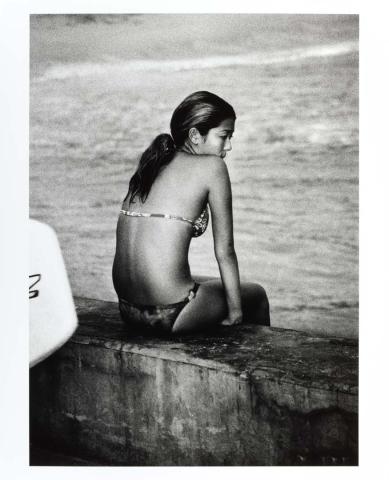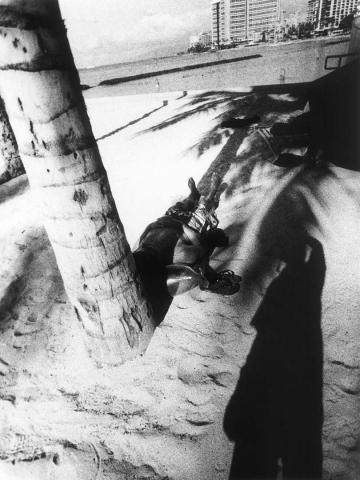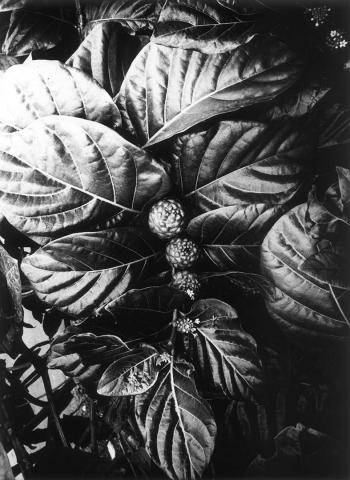ESSAY: Moriyama’s distinctive photographs
By Reuben Keehan
‘We Can Make Another Future’ September 2014
A central figure in Japanese photography since the 1960s, Daido Moriyama is renowned for his distinctive visual style and his ongoing engagement with documenting life in a densely urbanised society. An autodidact, Moriyama began his career as an assistant to Eikoh Hosoe in 1961, and developed a practice combining Hosoe’s and Shomei Tomatsu’s striking documents of postwar Japan with the influence of American street photographers Robert Frank and William Klein, the bohemian photo-narratives of Dutch photographer Ed van der Elsken, and the emerging pop style of Andy Warhol. On joining the radical Provoke group of photographers in the late 1960s, Moriyama further honed his methodology to epitomise the group’s stark are, bure, boke, kontempo (raw, blurred, out-of-focus, contemporary) style. Over the years, he has demonstrated a singular commitment to documenting the street life of Japan — focusing on Tokyo’s hyper-urban Shinjuku district and towns where changes in the country’s social fabric are most clearly registered — in an ongoing visual and theoretical dialogue with his Provoke rival Takuma Nakahira and the mercurial Nobuyoshi Araki.
Moriyama’s early work evokes the sociopolitical turmoil of Japanese society in the late 1960s and early 1970s, when widespread dissatisfaction with the nation’s role in the Cold War led to factional unrest, street fighting and acts of terrorism. During this period, Moriyama and his Provoke colleagues pushed photographic representation to its limit. They used unusual angles, obscured their subjects in gritty, grainy images shot through glass and fabric, deliberately mishandled shutter and darkroom processes, and rephotographed journalistic and commercial imagery to produce an intense, alienating vision of a society in transition. An image from the book Hunter (1972) that captures a young woman seemingly fleeing down an alleyway near the American military base in Yokosuka is one of the artist’s more enduring works from this period, emblematic of his preoccupation with documenting marginal existence and exposing social contradictions.
The uniqueness of Moriyama’s viewpoint, developed over years of commitment to a single locality, is evident when comparing works from the 2000s. Shinjuku 2003, a photograph of a figure, at once feminine and androgynous, standing amid the garish street signage of Kabukicho, the red-light district in Shinjuku’s north, reads as natural, so adapted is Moriyama to his immediate context. When removed from his familiar habitat, however, as revealed in the 2007 ‘Hawaii’ series, Moriyama brings a rare, novel perspective to a part of the world whose image in popular culture has been more or less consistent for decades. The blue skies and golden beaches deployed by mass media are glimpsed instead through obtuse angles of grainy black and white; sunshine appears as elongated shadows or blasts of overexposed white, while natural flora and suntanned bodies are pictured with exquisite tonal subtlety. To the hackneyed and touristic, he restores a sense of delicate beauty and quotidian drama.
Daido Moriyama’s photographs therefore provide a human-scaled, street-level counterpoint to dominant representations of society and culture. His is a project devoted to undermining conventional depictions of the spaces of life and living achieved simply by inhabiting them.
Connected objects

Shinjuku 2004, printed 2014
- MORIYAMA, Daido - Creator
Metadata, copyright and sharing information
About this story
- Subject



